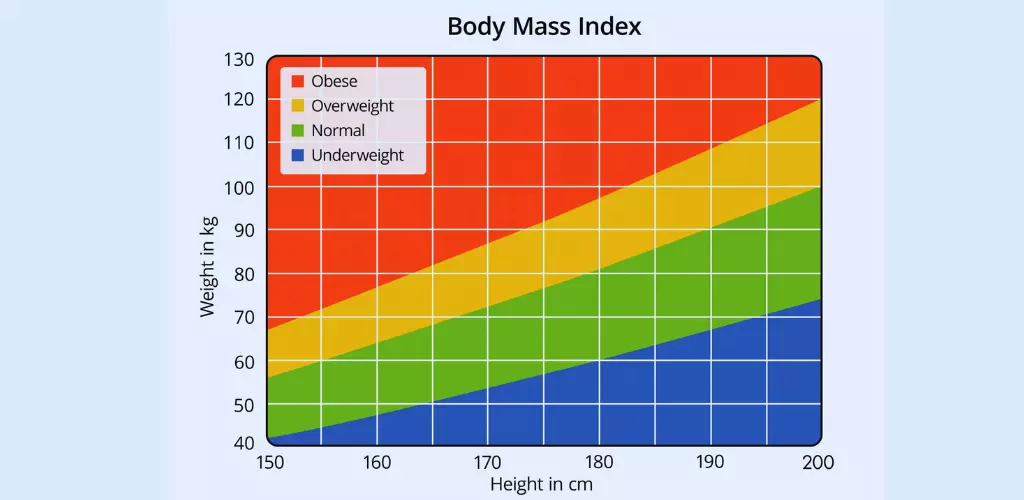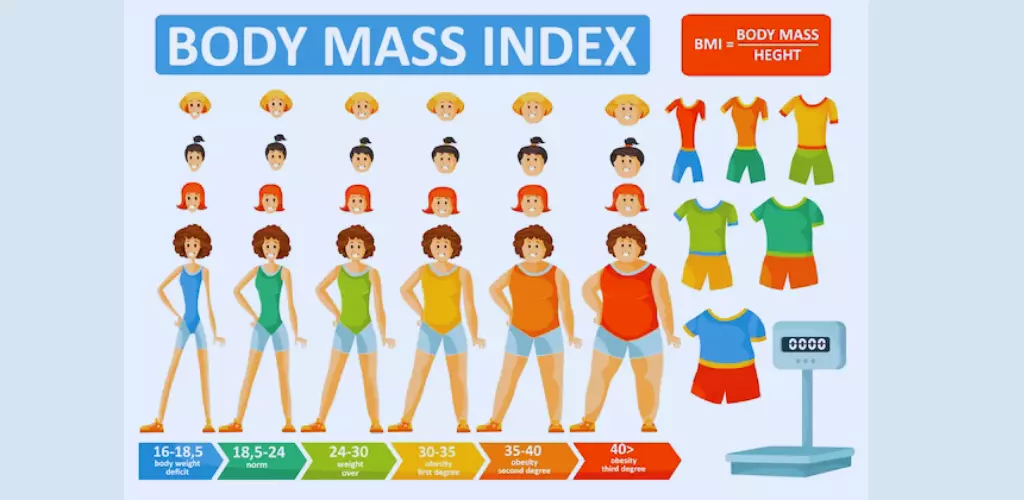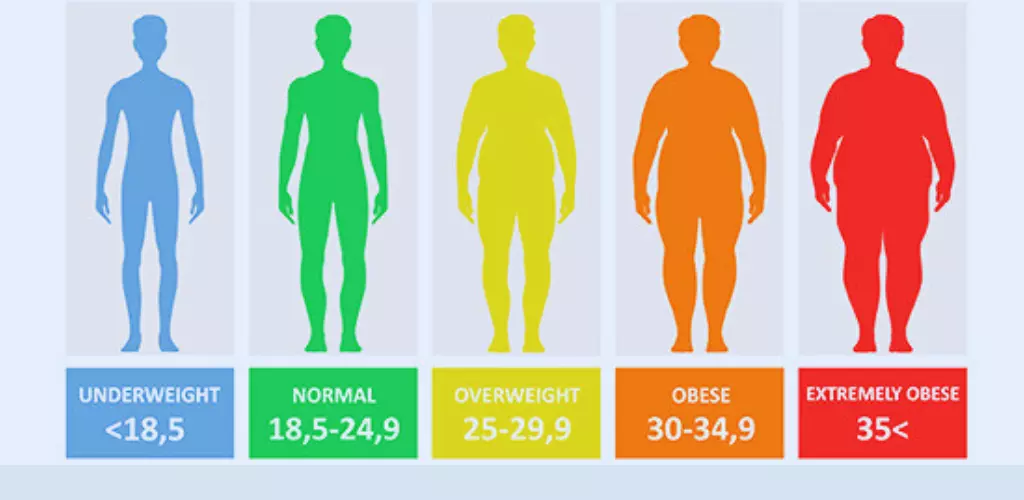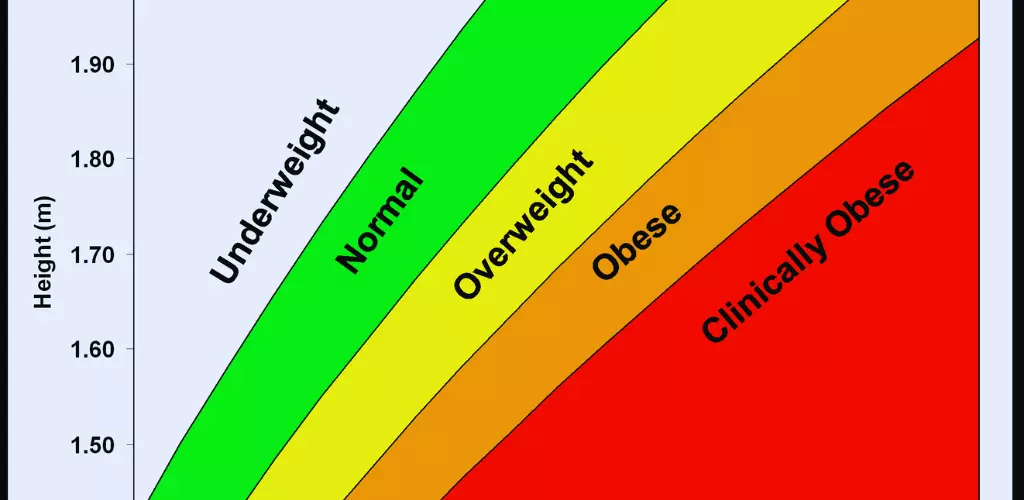The body mass index (BMI) is a statistical measure of the ratio of a person’s weight and height. It is often used as a simple means of classifying whether a person is underweight, overweight, obese, or of normal weight.
The BMI is calculated by taking a person’s weight in kilograms and dividing it by their height in meters squared. The resulting number is then used to classify a person as underweight (BMI less than 18.5), normal weight (BMI between 18.5 and 24.9), overweight (BMI between 25 and 29.9), or obese (BMI 30 or greater).
The BMI has come under criticism in recent years for its lack of precision and its inability to take into account factors such as muscle mass and body fat percentage. However, it remains a popular and easy-to-use tool for assessing a person’s weight.
If you are interested in learning more about the body mass index, or if you would like to calculate your own BMI, please visit the following website:
https://billigetesterpro.no/bmi-kalkulator-kroppsmasseindeks/
The body mass index (BMI) is a statistical measure of the ratio of a person’s weight to their height. It is used as a simple means of estimating whether a person is overweight or underweight. The BMI is calculated by dividing a person’s weight in kilograms by their height in meters squared.

The BMI is a useful tool for measuring overweight and obesity, but it has some limitations. BMI does not directly measure body fatness, and it may overestimate body fatness in people who are very muscular (such as athletes) or who have a lot of bone mass (such as some older adults). BMI also does not take into account where body fat is stored on the body. For example, someone with a high BMI may have mostly muscle, while someone with a lower BMI may have mostly body fat.
Despite its limitations, BMI is a good general indicator of overweight and obesity. BMI is used by healthcare professionals to screen for overweight and obesity and to identify people who are at risk for health problems related to these conditions.
BMI categories
The BMI categories used by healthcare professionals are based on the recommendations of the World Health Organization (WHO).
The WHO recommends the following BMI categories for adults:
Underweight: BMI less than 18.5
Normal weight: BMI 18.5 to 24.9
Overweight: BMI 25 to 29.9
Obesity: BMI 30 or greater
The WHO recommends the following BMI categories for children and adolescents:
Underweight: BMI less than the 5th percentile for age and gender
Normal weight: BMI 5th to less than the 85th percentile for age and gender
Overweight: BMI 85th to less than the 95th percentile for age and gender
Obesity: BMI equal to or greater than the 95th percentile for age and gender.

BMI and health
Overweight and obesity are associated with an increased risk of a number of chronic diseases and conditions, including heart disease, stroke, type 2 diabetes, and certain types of cancer.
People who are overweight or obese are more likely to have high blood pressure, high cholesterol, and other risk factors for heart disease and stroke.
Overweight and obesity are also risk factors for type 2 diabetes. Type 2 diabetes is a condition that occurs when the body doesn’t use insulin properly. Insulin is a hormone that helps the body to control blood sugar levels.
People who are overweight or obese are also at increased risk for certain types of cancer, including endometrial, breast, and colon cancer.
Weight loss and health
Even a small amount of weight loss can help to reduce the risk of developing these chronic diseases and conditions.
For example, a 5-10% reduction in body weight can help to lower blood pressure, improve cholesterol levels, and reduce the risk of developing type 2 diabetes.
Weight loss can also help reduce the risk of developing certain types of cancer, including endometrial, breast, and colon cancer.
There are many ways to lose weight, and the best method is the one that you can stick with long-term. Some people may need to make changes to their diet and exercise habits, while others may need to use weight loss medications or undergo weight loss surgery.
Making lifestyle changes
Diet and exercise are the most important things you can do to lose weight and keep it off.
The best way to lose weight is to eat fewer calories and to be more physically active.
To lose weight, you need to create a calorie deficit. This means that you need to burn more calories than you consume.
You can create a calorie deficit by eating fewer calories, burning more calories through physical activity, or both.
To lose one pound (0.45 kg) per week, you need to create a calorie deficit of 3,500 calories. This can be done by eating 500 fewer calories per day and/or burning 500 more calories per day.
To lose two pounds (0.9 kg) per week, you need to create a calorie deficit of 7,000 calories. This can be done by eating 1,000 fewer calories per day and/or burning 1,000 more calories per day.
It is important to remember that you should not try to lose weight too quickly. Crash diets and other extreme measures can lead to unhealthy weight loss. Healthy weight loss is gradual and should be done at a rate of 0.5-2 pounds (0.23-0.9 kg) per week.

Making changes to your diet
There are many different ways to change your diet to lose weight. Here are some general tips:
Eat more fruits and vegetables. Fruits and vegetables are low in calories and high in fiber, which can help you lose weight.
Eat fewer high-calorie foods. Foods such as cake, cookies, ice cream, and chips are high in calories and should be eaten in moderation.
Eat fewer high-fat foods. Foods such as fatty meats, full-fat dairy products, and oils are high in fat and should be eaten in moderation.
Eat fewer high-sugar foods. Foods such as candy, soda, and fruit juice are high in sugar and should be eaten in moderation.
Choose lower-calorie alternatives. If you are craving high-calorie food, try a lower-calorie alternative. For example, if you are craving a hamburger, try a turkey burger.
Drink plenty of water. Water is essential for good health and can help you feel full, aiding in weight loss.
Making changes to your physical activity
In addition to eating a healthy diet, you also need to be more physically active to lose weight.
The best way to lose weight is to combine diet and exercise.
To lose one pound (0.45 kg) per week, you need to create a calorie deficit of 3,500 calories. This can be done by eating 500 fewer calories per day and/or burning 500 more calories per day through physical activity.
To lose two pounds (0.9 kg) per week, you need to create a calorie deficit of 7,000 calories. This can be done by eating 1,000 fewer calories per day and/or burning 1,000 more calories per day through physical activity.
There are many different ways to be more physically active. Here are some general tips:
Do moderate-intensity aerobic activity for 30 minutes on most days of the week. Moderate-intensity aerobic activities include walking, swimming, and biking.
Do vigorous-intensity aerobic activity for 20 minutes on most days of the week. Vigorous-intensity aerobic activities include running and jogging.
Do strength-training activities for all major muscle groups on two or more days per week. Strength-training activities include lifting weights and using resistance bands.
Use a pedometer or other activity tracker to increase your level of physical activity. A pedometer is a small device that counts your steps.
Get regular physical activity. Physical activity is any activity that makes you move your body and burn calories.
Weight loss medications
If you are unable to lose weight through diet and exercise alone, you may want to consider weight loss medications.
Weight loss medications can help you lose weight by reducing your appetite or increasing the energy you burn.
Weight loss medications are not for everyone, and they should be used only under the care of a healthcare professional.
Weight loss surgery
Weight loss surgery, also called bariatric surgery, is a type of surgery that is used to treat obesity.
Weight loss surgery is usually only recommended for people who are severely obese and who have not been able to lose weight through diet and exercise.
Weight loss surgery is not for everyone, and it should be used only under the care of a healthcare professional.

BMI and children
The BMI is not a perfect measure of body fatness, but it is a good general indicator of overweight and obesity. Healthcare professionals use the BMI to screen for overweight and obesity and identify people at risk for health problems related to these conditions.
The BMI categories used by healthcare professionals are based on the recommendations of the World Health Organization (WHO).
The WHO recommends the following BMI categories for adults:
Underweight: BMI less than 18.5
Normal weight: BMI 18.5 to 24.9
Overweight: BMI 25 to 29.9
Obesity: BMI 30 or greater
The WHO recommends the following BMI categories for children and adolescents:
Underweight: BMI less than the 5th percentile for age and gender
Normal weight: BMI 5th to less than the 85th percentile for age and gender
Overweight: BMI 85th to less than the 95th percentile for age and gender
Obesity: BMI equal to or greater than the 95th percentile for age and gender
BMI and health
Overweight and obesity are associated with an increased risk of a number of chronic diseases and conditions, including heart disease, stroke, type 2 diabetes, and certain types of cancer.
People who are overweight or obese are more likely to have high blood pressure, high cholesterol, and other risk factors for heart disease and stroke.
Overweight and obesity are also risk factors for type 2 diabetes. Type 2 diabetes is a condition that occurs when the body doesn’t use insulin properly. Insulin is a hormone that helps the body to control blood sugar levels.
People who are overweight or obese are also at increased risk for certain types of cancer, including endometrial, breast, and colon cancer.
Weight loss and health
Even a small amount of weight loss can help to reduce the risk of developing these chronic diseases and conditions.
For example, a 5-10% reduction in body weight can help to lower blood pressure, improve cholesterol levels, and reduce the risk of developing type 2 diabetes.
Weight loss can also help reduce the risk of developing certain types of cancer, including endometrial, breast, and colon cancer.
There are many ways to lose weight, and the best method is the one that you can stick with long-term. Some people may need to make changes to their diet and exercise habits, while others may need to use weight loss medications or undergo weight loss surgery.
Making lifestyle changes
Diet and exercise are the most important things you can do to lose weight and keep it off.
The best way to lose weight is to eat fewer calories and to be more physically active.
To lose weight, you need to create a calorie deficit. This means that you need to burn more calories than you consume.
You can create a calorie deficit by eating fewer calories, burning more calories through physical activity, or both.
To lose one pound (0.45 kg) per week, you need to create a calorie deficit of 3,500 calories. This can be done by eating 500 fewer calories per day and/or burning 500 more calories per day.
To lose two pounds (0.9 kg) per week, you need to create a calorie deficit of 7,000 calories. This can be done by eating 1,000 fewer calories per day and/or burning 1,000 more calories per day.
It is important to remember that you should not try to lose weight too quickly. Crash diets and other extreme measures can lead to unhealthy weight loss. Healthy weight loss is gradual and should be done at a rate of 0.5-2 pounds (0.23-0.9 kg) per week.
Making changes to your diet
There are many different ways to change your diet to lose weight. Here are some general tips:
Eat more fruits and vegetables. Fruits and vegetables are low in calories and high in fiber, which can help you lose weight.
Eat fewer high-calorie foods. Foods such as cake, cookies, ice cream, and chips are high in calories and should be eaten in moderation.
Eat fewer high-fat foods. Foods such as fatty meats, full-fat dairy products, and oils are high in fat and should be eaten in moderation.
Eat fewer high-sugar foods. Foods such as candy, soda, and fruit juice are high in sugar and should be eaten in moderation.
Choose lower-calorie alternatives. If you are craving high-calorie food, try a lower-calorie alternative. For example, if you are craving a hamburger, try a turkey burger.
Drink plenty of water. Water is essential for good health and can help you feel full, aiding in weight loss.
Making changes to your physical activity
In addition to eating a healthy diet, you also need to be more physically active to lose weight.
The best way to lose weight is to combine diet and exercise.
To lose one pound (0.45 kg) per week, you need to create a calorie deficit of 3,500 calories.















